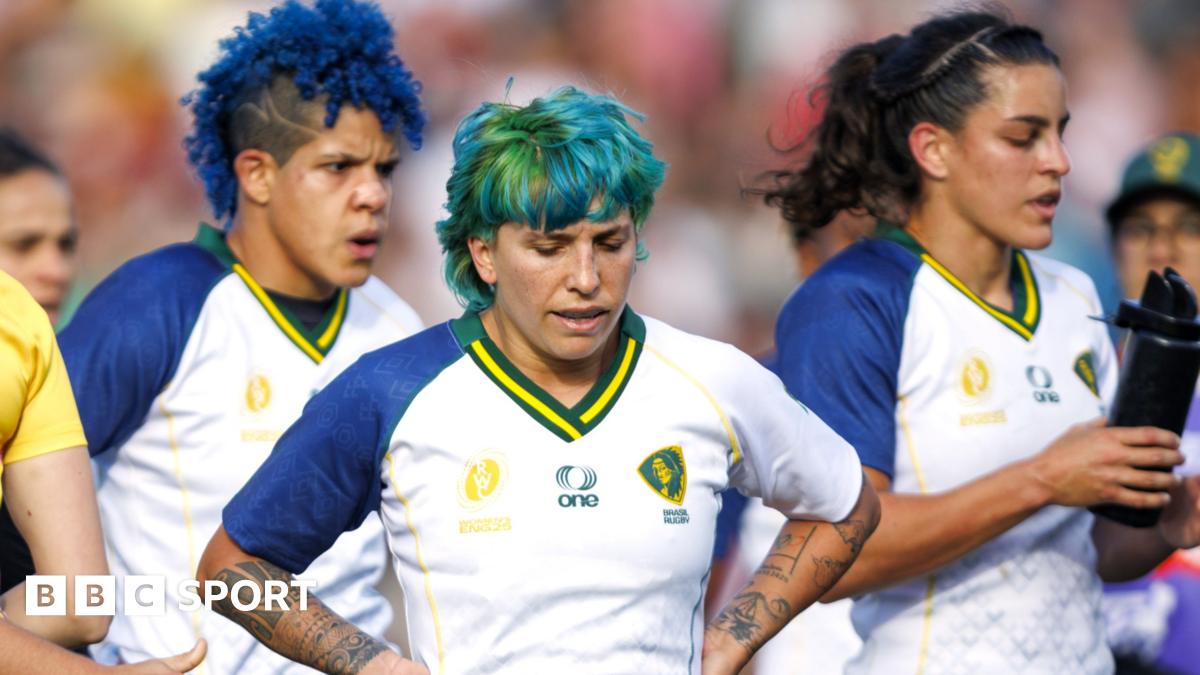Introduction
Klebsiella pneumoniae (Kp) is a gram-negative bacterium that exists as normal flora in the respiratory and digestive tracts; however, it can cause opportunistic infections. The virulence-related factors contributing to Kp pathophysiology include bacterial capsular polysaccharides (polymorphic), lipopolysaccharides, pili (types 1 and 3), outer membrane proteins, and iron-binding siderophores (aerobactin, enterobactin, salmochelin, and yersiniabactin).1,2 These virulence factors are resistant to antimicrobial peptides, enabling bacteria to resist the phagocytic influence of host immune cells, adhere to biological and abiotic surfaces, and alter their permeability to antibiotics.3–5 Siderophores tightly bind to extracellular iron and re-enter bacteria via specific import mechanisms.6
Clinically isolated Kp can be divided into two types.7,8 The first is classical (cKp), which is typically isolated from immunocompromised persons and can easily cause nosocomial infections. cKp strains are not virulent in mouse infection models but often harbor genes that confer multiple drug-resistance, including carbapenem resistance. Carbapenemases are classified into Ambler class A ((carbapenemase) KPC, GES, IMI, NMC, SME), B (IMP, VIM, New Delhi metal-β-lactamase (NDM), GIM, SIM, SPM), or D (OXA-48).9,10 A previous study showed that the proportion of drug-resistant Kp carbapenemases increases with age, with the highest resistance rates found in patients > 60 years and higher proportions of drug-resistant strains in blood and urine than in sputum.11,12 The antibiotics tigecycline and colistin are considered last-resort treatments for carbapenem-resistant Kp (CRKp). Key mechanisms of resistance to tigecycline in Kp include the overexpression of efflux pumps (such as AcrAB and OqxAB), inactivation of efflux-pump negative feedback factors, acquisition of the plasmid-borne tet(A) variant gene, and mutation of the rpsJ gene.13–15 Colistin resistance is associated with genetic changes in lipid A modifications, including the overexpression of two-component regulatory systems (PmrAB and PhoPQ), inactivation of MgrB proteins, and the presence of mcr-1-carrying plasmids.16–18
The second type, hypervirulent Kp (hvKp) (Figure 1), is characterized by capsular hyperproduction and a hypermucoviscous colony phenotype. hvKp typically causes community-acquired infections, as well as multi-site infections occurring rapidly in sequence, such as liver abscess, encephalitis, endophthalmitis, bacteremia, pneumonia, and empyema, and is usually sensitive to antibiotics.19,20 The hypervirulent phenotype may be caused by the cumulative effect of different combinations of helper genes that work together to increase bacterial virulence. However, no clinical molecular diagnosis or microbial consensus currently exists for hvKp strains.1,21,22 Moreover, although the high capsular production and hypermucoviscous phenotype may be closely related to the high virulence of hvKp, this correlation is not consistent.
|
Figure 1 Virulence mechanisms of hypermucoviscous Klebsiella pneumoniae: This figure illustrates the key mechanisms of virulence of the recently isolated hypermucoviscous Klebsiella pneumoniae.
|
In recent years, an increasing number of reports on drug-resistant Kp strains have led to an awareness of hypervirulent CRKp (hv-CRKp) strains. hv-CRKp strains emerge from hvKp acquiring mobile genetic elements carrying multiple antibiotic-resistance genes (such as genes encoding extended-spectrum beta-lactamases (ESBLs) and carbapenemases) or multi-drug-resistant (MDR)-Kp acquiring virulence genes (such as rmpA and siderophores), with the subsequent convergence of resistance and virulence.1,23 Some studies suggest that MDR-Kp is more likely to acquire virulence genes.1,23
Owing to the highly pathogenic nature of the hv-CRKp strain and its resistance to many antibiotics, many researchers have analyzed its characteristics. In this review, we summarize existing literature on the clinical characteristics, virulence, drug resistance, and treatment of hv-CRKp infection.
Epidemiological and Clinical Features
The combination of hypervirulence and multi-drug resistance in hv-CRKp represents a major medical and health challenge. Multivariate analysis has revealed that a strong biofilm-producing strain, an independent predictor of CRKp mortality, is associated with increased CRKp infection-related deaths.24 The dominant strain of CRKp in the United States and European countries is Kp sequence type (ST) 258, whereas that in China is ST11.25–28 The main carbapenemase genes in CRKp strains are bla KPC-2, bla NDM-1, and bla OXA-48. The prevalence of hypervirulence among CRKp strains ranges from 7.5% to 15%.29–31 According to a study by the top three hospitals in Shanghai, China, the isolation rate of the hv-CRKp strain is 1.5%, and the dominant ST is ST11/K64, followed by ST11/K47, ST23/K1, and ST86/K2. ST11 is the most common ST among hv-CRKp isolates in China.25 An Iranian study indicated that 85.7% of hvKp isolates produce ESBL; the carrying rates of bla NDM-6, bla OXA-48, bla CTX-M, blaSHV, and blaTEM were 7.1, 14.3, 21.4, 28.6, and 78.6%, respectively. Of the hvKP isolates, 42.9% were CR-hvKP. Moreover, XDR-hvKP isolates belong to ST15, ST377, ST442, and ST147, respectively.32 hv-CRKp is mainly isolated from respiratory tract and bile specimens but is also detected in other specimens, including urine, blood, and pleural effusion.25,26 Among infected men, those aged 50–60 years have the highest risk of disease. Other studies have confirmed that older people are more susceptible to hv-CRKp infection, although CRKp has also been isolated from hospitalized infants.25,26,33,34 Diabetes mellitus is a high-risk factor for hvKp infection.35,36 Surgery and ICU are the major endemic departments. Furthermore, the mortality rate of hv-CRKp infection is approximately 17.1%.26
Laboratory Analyses
Kp strains have been identified via traditional culture isolation, and virulence-related and drug-resistance genes have been detected using a variety of bacterial strain identification and gene detection methods.37 Classical detection methods include antimicrobial susceptibility testing approaches, such as disk diffusion, AGAR dilution, broth microdilution, MALDI-TOF MS, VITEK MS, and biomsamrieux, which test for antibiotic sensitivity. The string test can be used to determine the hyperviscous phenotype; here, when a loop applied to a colony pulls a “string” of >5 mm, it indicates a positive result; however, this test is affected by many factors, such as culture conditions. The sedimentation assay is more reliable than the string test for determining the hyperviscous phenotype.8 The virulence profiles of Kp isolates have been evaluated using a Galleria mellonella infection model. In addition, virulence phenotype identification can be achieved using in vivo virulence models, biofilm formation assays, neutrophil assays, and iron carrier production assays.38–40 PCR, sequencing, PCR-based multilocus sequence typing, and phylogenetic multilocus sequence typing are also used to detect strains and serotypes.41 A microdilution checkerboard method can be used to determine the activity of Kp strains against various drugs. In recent years, the application of next-generation and whole-gene sequencing technology, which can rapidly detect strains, drug resistance, and virulence genes, has gradually increased and been applied in clinical practice.42
Virulence and Drug Resistance
Host factors and antibiotics may drive the adaptive evolution of Kp virulence-related and drug-resistance genes.43 Prior antibiotic therapy, previous hospitalization for five days or more, invasive procedures, and mechanical ventilation are all notable risk factors for hv-CRKp strain colonization. When combined with underlying diseases (such as diabetes), carbapenem exposure is an independent risk factor for hv-CRKp strain colonization.44–46 The common capsular antigens of hv-CRKp in China are K1, K2, and K54 and the ST is ST11.31,45,47 A study in Malaysia confirmed that all strains isolated from hypermucoviscous CRKp contained carbapenemase-resistance genes and showed multi-drug resistance, whereas the virulence genes detected in hypermucoviscous CRKp harbored the aerobactin siderophore receptor gene (iutA), iroB, rmpA, and rmpA2, with no K1/K serotype, peg-344, allS, or magA.29 As mentioned previously, hv-CRKp has two evolution patterns (Figure 2): CRKp acquiring virulence genes or hv-Kp acquiring resistance genes. Specifically, through the horizontal gene transfer of outer membrane vesicles (OMVs) carrying virulence or resistance genes, OMVs can carry blaNDM-1 genes and pass them to the hvKp strain NTUH-K2044; similarly, OMVs containing virulence genes isolated from hvKp can also be horizontally transferred to ESBL-producing cKp strains, thereby promoting the emergence of hv-CRKp.38,48,49 The hypervirulence and multi-drug resistance of hv-CRKp are mainly due to the existence of large plasmids containing multiple virulence genes (such as pLVPK) or hybrid conjugation plasmids with both virulence-related and carbapenem-resistance genes.28,50,51 Capsular evolution may lead to the convergence of carbapenem resistance and high virulence in Kp. According to research on the ST23-K1 strain, the wcaJ gene was interrupted by insertion sequence elements, resulting in small capsule synthesis and decreased virulence. However, the blaKPC-2 plasmid coupling frequency increased, which promoted high virulence and carbapenem resistance in the strain.52 Hypervirulent ST11-KL64 can rapidly diversify its resistance to tigecycline and polymyxin treatment. Sequencing analysis has revealed that ramR and lon frameshift mutations are the main causes of tigecycline resistance and that ceftazidime–avibactam (CZA) resistance is associated with the blaKPC-2 mutation. Several mechanisms have been shown to contribute to polymyxin resistance: increased expression of blaKPC-2 that increases the minimum inhibitory concentration of CZA; mutations in pmrB, phoQ, and mgrB; and the insertion of IS (ISKpn74 and IS903B) into the same location of mgrB, as well as a mutation associated with the efflux pumping system.18,53 Deletion of the acyltransferase gene (act) at the cps site plays a crucial role in the virulence evolution of ST11 CRKp.54,55 Wang et al isolated a strain of hv-CRKp from patients with scrotal abscess and urinary tract infection and observed its phenotypic transition from high viscosity to low viscosity, which was attributed to either defective or low expression of rmpADC or the capsule synthesis gene wcaJ, or mediated by ISKpn26 insertion/deletion or base pair insertion. Their experiments on mice confirmed that the invasiveness of the strain decreased significantly after transformation to the low-viscosity phenotype; however, the residence time of the strain in the urinary tract and gallbladder of mice was significantly extended.43
 |
Figure 2 Mechanisms of carbapenem-resistant hypermucoviscous Klebsiella pneumoniae formation: This figure presents the formation mechanisms contributing to carbapenem-resistant hypermucoviscous Klebsiella pneumoniae.
|
The hv-CRKp isolates reported in recent years often harbor multiple resistance genes and a large plasmid containing multiple virulence genes. The Kp0179 strain (found in routine monitoring of clinical samples isolated from a patient in China) was confirmed to belong to K2-ST375. Six resistance genes were identified, including blaSHV-99, fosA, oqxAB, blaNDM-1, qnrS1, and blaSHV-12, the last three of which were located on the binding plasmid pNDM-Kp0179 (IncX3 type), as well as the plasmid pLVPK, of approximately 121 kb (carrying iroBCDN, iucABCDiutA, rmpA, rmpA2, and other virulence genes).56 KP18-3-8 and KP18-2079, which are ST11-KL64 CRKp clinical isolate strains, harbor the positive resistance genes blaKPC-2 and rmpA2. Two new hybrid virulence plasmids, KP18-3-8 (pKP1838-KPC-vir, 228,158 bp) and KP18-2079 (pKP1838-KPC-vir, 182,326 bp), have been identified. The IncFII/incr virulence plasmid, pKP18-2079-vir, may be the result of recombinant PLVPK-like virulence and MDR plasmids.57 LABACER 01 has a genome sequence of 5,598,020 bp, belongs to ST25, and contains 19 antibiotic-resistance and virulence-related genes, including mrkA-F and ecpD, as well as iron acquisition systems, such as iutA, iron, entB, entS, and entH. The ferric enterobactin-binding periplasmic protein fepB-D is also encoded by basic structural genes cyoA/B, tamA/B, hemN, and gltB associated with dense intestinal colonization. LABACER 27 has a genome sequence of 5,622,382 bp, belongs to ST25, and contains 20 different antibiotic-resistance and virulence factor-related genes, including ycfM, mrkD, kpn, and entB.58 SZ651 is a ST15/K19 clone containing multiple resistance genes, including aac(3)-IId, aac(6’)-Ib-cr, blaSHV-28, blaSHV-106, blaTEM-1B, blaOXA-1, blaCTX-M-15, blaKPC-2, mph(A), and tet(A). Several key virulence factors have also been identified in this strain, including genes encoding type 3 fimbria virulence determinants (mrkA, mrkB, mrkE, mrkF, mrkI, and mrkJ) and the iron-containing factor yersiniabactin (ybtA, ybtP, ybtQ, ybtS, ybtT, and ybtU).59
A previous study analyzed RJ-8061, a urine isolate from an 86-year-old female patient with pneumonia, which contains KPC-2 and NDM −5 enzymes. This study identified the pRJ-8061-hybrid plasmid as a 294,249 bp hybrid plasmid that contains both resistance genes [blatemm-1b, mph(a), aac(3)-IId] and virulence genes (iucABCDiutA, rmpA2), although rmpA2 was truncated. In addition, blaKPC-2 and blaNDM-5 are located on the pRJ-8061-KPC-2 (IncFII/IncR) plasmid (171,321 bp) and pRJ-8061-NDM-5 (IncX3) plasmid (46,161 bp), respectively.60 The Kpn216 strain (French isolate) is resistant to penicillin and its combination with beta-lactamase inhibitors, as well as carbapenems, third-generation cephalosporins, quinolones, and tigecycline. blaCTX-M-15, encoded by a new ST9-IncN plasmid, is found in an IS26-based composite transposon, the downstream of which is a truncated isecp1 insertion sequence. Each isolate carries one IncHI1B/IncFIB replicator and is numbered VIR-KPN154 and VIR-KPN2166.30 KP75w, which belongs to ST11, harbors resistance genes, including carbapenemase genes (blaNDM-1), as well as highly virulent genes (rmpA2, iucABCD-iutA, fyuA, irp, mrk, ybt, fep, and virB2).61
Treatment
A meta-analysis of 77 studies from 17 countries showed widespread resistance among hvKp strains, including resistance to ampicillin sulbactam, cefazolin, cefuroxime, ceftazidine (57.1%), cefepime (51.3%), and carbapenems, with all resistance rates greater than 40%.47 Drug-resistance analysis of hv-CRKp in China revealed resistance to ampicillin, ampicillin/sulbactam, cefoperazone/sulbactam, piperacillin/tazobactam, cefazolin, cefuroxime, ceftazidime, imipenem, meropenem, and amikacin, with resistance rates ranging from more than 60% for ciprofloxacin and 43.8% for benzidine-sulfamethoxazole.25
CZA is a novel combination preparation with good antibacterial activity against MDR gram-negative bacteria that is well-tolerated by patients, with few adverse reactions. Accordingly, CZA is used as salvage therapy in patients infected with CRKp but is ineffective against carbapenemase B.62–64 Polymyxins and tigecycline are considered critical therapeutics for resistant strains and represent the last line of defense against CRKp infections.65–69 However, reports of polymyxin and tigecycline resistance have gradually increased. A Chinese study reported that the percentages of tigecycline- and colistin B-resistance in isolated CRKp strains were 1.2% and 4.8%, respectively.47 Furthermore, elacycline is a novel preparation that can be used to treat hv-CRKp.
In recent years, non-antibiotic treatments have gradually received attention. For example, the application of Corynebacterium pseudodiphtheriticum to the nasal cavity of mice challenged with the MDR-Kp strain ST25 reduced lung bacterial cell counts and tissue damage.70 This was attributed to modulation of the recruitment of white blood cells into the lung and the production of TNF-α, IFN-γ, and IL-10 in the respiratory tract and serum. Thus, this bacterium could represent a novel respiratory tract probiotic, replacing antibiotic therapy and reducing the generation of drug-resistance genes under the burden of antibiotics. However, further studies are required to confirm these findings. Additionally, treatment with the phage kpssk3 improved the survival rate of mice with hypermucoviscous CRKp infection by 100%, with no significant changes in the intestinal microbiota and no serious side effects.71 Thus, kpssk3 may represent an effective method for treating hypermucoviscous CRKp.
Conclusions
Owing to the annual increase in the number of hv-CRKp strains, the high mortality rate of hv-CRKp infection, and the lack of effective anti-infective drugs, hv-CRKp has become an important burden on global medicine and health. The dominant endemic CRKp strain in the United States and European countries is ST258, whereas that in China is ST11. hv-CRKp can emerge from two main pathways: CRKp acquiring virulence genes or hvKp acquiring drug-resistance genes via the horizontal gene transfer of OMVs. The detection rate of hv-CRKp is the highest in sputum specimens but also very high in bile specimens. The incidence of hv-CRKp is higher in males and increases with age; however, hv-CRKp is also detected in newborns. ICU stays, carbapenem exposure, and diabetes are major risk factors for infection with this strain. The identification of hv-CRKp strains primarily involves the detection of virulence-related and drug-resistance genes. Whole-gene detection has recently emerged as an efficient method, although other detection methods, including 16sRNA and PCR, are also commonly used. Despite this availability of various detection methods for rapid diagnosis for drug resistance genes, it is sometimes difficult to determine whether a specific strain is pathogenic, and the responses of some patients to antibiotics do not match the results of drug resistance gene tests. It is therefore necessary to develop more accurate detection methods to distinguish pathogenic Kp, especially for drug resistance gene detection and drug selection. The drug-resistance rate of hv-CRKp is high. Currently, the commonly used drugs for the treatment of hv-CRKp in clinical practice include CZA, tigecycline, and polymyxin. However, in recent years, the resistance rates to the above-mentioned drugs have gradually increased, including tigecycline resistance caused by ramR and long frame shift mutations, and CZA resistance caused by blaKPC-2 mutations. Additionally, the expression of blaKPC-2 increased, raising the minimum inhibitory concentration of CZA. Mutations in pmrB, phoQ and mgrB, insertion of IS (ISKpn74 and IS903B) into the same position of mgrB, and mutations related to the drainage pump system are all associated with polymyxin resistance. It is therefore recommended to combine antibacterial drugs for the treatment of hv-CRKp. Moreover, new drugs, including elacycline, have gradually emerged for the treatment of hv-CRKp. Furthermore, non-antibiotic therapies, such as C. pseudodiphtheriticum 090104 and kpssk3, represent promising therapies for hv-CRKp that require further research.
Abbreviations
Kp, Klebsiella pneumoniae; cKp, classical Klebsiella pneumoniae; CRKp, carbapenem-resistant Klebsiella pneumoniae; hvKp, hypervirulent Klebsiella pneumoniae; hv-CRKp, hypervirulent CRKp; ESBLs, extended-spectrum beta-lactamases; MDR, multi-drug-resistant; ST, sequence type; iutA, aerobactin siderophore receptor gene; OMVs, outer membrane vesicles; CZA, ceftazidime–avibactam; KPC, carbapenemase; NDM, New Delhi metal-β-lactamase.
Data Sharing Statement
No new data were analyzed or created in this article.
Author Contributions
All authors made a significant contribution to the work reported, whether that is in the conception, study design, execution, acquisition of data, analysis and interpretation, or in all these areas; took part in drafting, revising or critically reviewing the article; gave final approval ofthe version to be published; have agreed on the journal to which the article has been submitted; and agree to be accountable for all aspects of the work.
Funding
This study was supported by grants from the Science and Technology Department of Jilin Province (No.20220508068RC).
Disclosure
The authors declare no conflicts of interest.
References
1. Gonzalez-Ferrer S, Penaloza HF, Budnick JA, et al. Finding order in the chaos: outstanding questions in Klebsiella pneumoniae pathogenesis. Infect Immun. 2021;89.
2. Paczosa MK, Mecsas J. Klebsiella pneumoniae: going on the offense with a strong defense. Microbiol Mol Biol Rev. 2016;80:629–661. doi:10.1128/MMBR.00078-15
3. Campos MA, Vargas MA, Regueiro V, Llompart CM, Alberti S, Bengoechea JA. Capsule polysaccharide mediates bacterial resistance to antimicrobial peptides. Infect Immun. 2004;72:7107–7114. doi:10.1128/IAI.72.12.7107-7114.2004
4. Domenico P, Salo RJ, Cross AS, Cunha BA. Polysaccharide capsule-mediated resistance to opsonophagocytosis in Klebsiella pneumoniae. Infect Immun. 1994;62:4495–4499. doi:10.1128/iai.62.10.4495-4499.1994
5. Gomez-Simmonds A, Uhlemann AC. Clinical implications of genomic adaptation and evolution of carbapenem-resistant Klebsiella pneumoniae. J Infect Dis. 2017;215:S18–S27. doi:10.1093/infdis/jiw378
6. Miethke M, Marahiel MA. Siderophore-based iron acquisition and pathogen control. Microbiol Mol Biol Rev. 2007;71:413–451. doi:10.1128/MMBR.00012-07
7. Russo TA, Marr CM. Hypervirulent Klebsiella pneumoniae. Clin Microbiol Rev. 2019;32.
8. Walker KA, Miller VL. The intersection of capsule gene expression, hypermucoviscosity and hypervirulence in Klebsiella pneumoniae. Curr Opin Microbiol. 2020;54:95–102. doi:10.1016/j.mib.2020.01.006
9. Lai CC, Yu WL. Klebsiella pneumoniae harboring carbapenemase genes in Taiwan: its evolution over 20 years, 1998–2019. Int J Antimicrob Agents. 2021;58:106354. doi:10.1016/j.ijantimicag.2021.106354
10. Chiang TT, Yang YS, Yeh KM, et al. Quantification and comparison of virulence and characteristics of different variants of carbapenemase-producing Klebsiella pneumoniae clinical isolates from Taiwan and the United States. J Microbiol Immunol Infect. 2016;49:83–90. doi:10.1016/j.jmii.2015.08.011
11. Hu Y, Liu C, Shen Z, et al. Prevalence, risk factors and molecular epidemiology of carbapenem-resistant Klebsiella pneumoniae in patients from Zhejiang, China, 2008–2018. Emerg Microbes Infect. 2020;9:1771–1779. doi:10.1080/22221751.2020.1799721
12. Richet H. Seasonality in gram-negative and healthcare-associated infections. Clin Microbiol Infect. 2012;18:934–940. doi:10.1111/j.1469-0691.2012.03954.x
13. Pournaras S, Koumaki V, Spanakis N, Gennimata V, Tsakris A. Current perspectives on tigecycline resistance in Enterobacteriaceae: susceptibility testing issues and mechanisms of resistance. Int J Antimicrob Agents. 2016;48:11–18. doi:10.1016/j.ijantimicag.2016.04.017
14. Chiu SK, Huang LY, Chen H, et al. Roles of ramR and tet(A) mutations in conferring tigecycline resistance in carbapenem-resistant Klebsiella pneumoniae clinical isolates. Antimicrob Agents Chemother. 2017;61.
15. He F, Shi Q, Fu Y, Xu J, Yu Y, Du X. Tigecycline resistance caused by rpsJ evolution in a 59-year-old male patient infected with KPC-producing Klebsiella pneumoniae during tigecycline treatment. Infect Genet Evol. 2018;66:188–191. doi:10.1016/j.meegid.2018.09.025
16. Poirel L, Jayol A, Nordmann P. Polymyxins: antibacterial activity, susceptibility testing, and resistance mechanisms encoded by plasmids or chromosomes. Clin Microbiol Rev. 2017;30:557–596. doi:10.1128/CMR.00064-16
17. Quan J, Li X, Chen Y, et al. Prevalence of mcr-1 in Escherichia coli and Klebsiella pneumoniae recovered from bloodstream infections in China: a multicentre longitudinal study. Lancet Infect Dis. 2017;17:400–410. doi:10.1016/S1473-3099(16)30528-X
18. Jin X, Chen Q, Shen F, et al. Resistance evolution of hypervirulent carbapenem-resistant Klebsiella pneumoniae ST11 during treatment with tigecycline and polymyxin. Emerg Microbes Infect. 2021;10:1129–1136. doi:10.1080/22221751.2021.1937327
19. Siu LK, Yeh KM, Lin JC, Fung CP, Chang FY. Klebsiella pneumoniae liver abscess: a new invasive syndrome. Lancet Infect Dis. 2012;12:881–887. doi:10.1016/S1473-3099(12)70205-0
20. Wong WM, Wong BC, Hui CK, et al. Pyogenic liver abscess: retrospective analysis of 80 cases over a 10-year period. J Gastroenterol Hepatol. 2002;17:1001–1007. doi:10.1046/j.1440-1746.2002.02787.x
21. Shan Y, Lambrecht RW, Donohue SE, Bonkovsky HL. Role of Bach1 and Nrf2 in up-regulation of the heme oxygenase-1 gene by cobalt protoporphyrin. FASEB J. 2006;20:2651–2653. doi:10.1096/fj.06-6346fje
22. Harada S, Doi Y. Hypervirulent Klebsiella pneumoniae: a call for consensus definition and international collaboration. J Clin Microbiol. 2018;56.
23. Wyres KL, Wick RR, Judd LM, et al. Distinct evolutionary dynamics of horizontal gene transfer in drug resistant and virulent clones of Klebsiella pneumoniae. PLoS Genet. 2019;15:e1008114. doi:10.1371/journal.pgen.1008114
24. Di Domenico EG, Cavallo I, Sivori F, et al. Biofilm production by carbapenem-resistant Klebsiella pneumoniae significantly increases the risk of death in oncological patients. Front Cell Infect Microbiol. 2020;10:561741. doi:10.3389/fcimb.2020.561741
25. Zhou C, Wu Q, He L, et al. Clinical and molecular characteristics of carbapenem-resistant Hypervirulent Klebsiella pneumoniae isolates in a tertiary hospital in Shanghai, China. Infect Drug Resist. 2021;14:2697–2706. doi:10.2147/IDR.S321704
26. Ouyang P, Jiang B, Peng N, et al. Characteristics of ST11 KPC-2-producing carbapenem-resistant hypervirulent Klebsiella pneumoniae causing nosocomial infection in a Chinese hospital. J Clin Lab Anal. 2022;36:e24476. doi:10.1002/jcla.24476
27. Zhang R, Liu L, Zhou H, et al. Nationwide surveillance of clinical carbapenem-resistant Enterobacteriaceae (CRE) strains in China. EBioMedicine. 2017;19:98–106. doi:10.1016/j.ebiom.2017.04.032
28. Zhou K, Xiao T, David S, et al. Novel subclone of carbapenem-resistant Klebsiella pneumoniae sequence type 11 with enhanced virulence and transmissibility, China. Emerg Infect Dis. 2020;26:289–297. doi:10.3201/eid2602.190594
29. Kong ZX, Karunakaran R, Abdul Jabar K, Ponnampalavanar S, Chong CW, Teh CSJ. The detection of hypermucoviscous carbapenem-resistant Klebsiella pneumoniae from a tertiary teaching hospital in Malaysia and assessment of hypermucoviscous as marker of hypervirulence. Microb Drug Resist. 2021;27:1319–1327. doi:10.1089/mdr.2020.0096
30. Beyrouthy R, Dalmasso G, Birer A, Robin F, Bonnet R. Carbapenem resistance conferred by OXA-48 in K2-ST86 hypervirulent Klebsiella pneumoniae, France. Emerg Infect Dis. 2020;26:1529–1533. doi:10.3201/eid2607.191490
31. Zhan L, Wang S, Guo Y, et al. Outbreak by hypermucoviscous Klebsiella pneumoniae ST11 isolates with carbapenem resistance in a tertiary hospital in China. Front Cell Infect Microbiol. 2017;7:182. doi:10.3389/fcimb.2017.00182
32. Davoudabadi S, Goudarzi H, Goudarzi M, et al. Detection of extensively drug-resistant and hypervirulent Klebsiella pneumoniae ST15, ST147, ST377 and ST442 in Iran. Acta Microbiol Immunol Hung. 2021. doi:10.1556/030.2021.01562
33. Liu C, Shi J, Guo J. High prevalence of hypervirulent Klebsiella pneumoniae infection in the genetic background of elderly patients in two teaching hospitals in China. Infect Drug Resist. 2018;11:1031–1041. doi:10.2147/IDR.S161075
34. Liu C, Du P, Xiao N, Ji F, Russo TA, Guo J. Hypervirulent Klebsiella pneumoniae is emerging as an increasingly prevalent K. pneumoniae pathotype responsible for nosocomial and healthcare-associated infections in Beijing, China. Virulence. 2020;11:1215–1224. doi:10.1080/21505594.2020.1809322
35. Shon AS, Bajwa RP, Russo TA. Hypervirulent (hypermucoviscous) Klebsiella pneumoniae: a new and dangerous breed. Virulence. 2013;4:107–118. doi:10.4161/viru.22718
36. Zhang Y, Zhao C, Wang Q, et al. High prevalence of hypervirulent Klebsiella pneumoniae infection in China: geographic distribution, clinical characteristics, and antimicrobial resistance. Antimicrob Agents Chemother. 2016;60:6115–6120. doi:10.1128/AAC.01127-16
37. Li W, Gao M, Yu J. Rising prevalence and drug resistance of Corynebacterium striatum in lower respiratory tract infections. Front Cell Infect Microbiol. 2024;14:1526312. doi:10.3389/fcimb.2024.1526312
38. Han X, Yao J, He J, et al. Clinical and laboratory insights into the threat of hypervirulent Klebsiella pneumoniae. Int J Antimicrob Agents. 2024;64:107275. doi:10.1016/j.ijantimicag.2024.107275
39. Wu Y, Wu C, Bao D, et al. Global evolution and geographic diversity of hypervirulent carbapenem-resistant Klebsiella pneumoniae. Lancet Infect Dis. 2022;22:761–762. doi:10.1016/S1473-3099(22)00275-4
40. Spadar A, Perdigao J, Campino S, Clark TG. Large-scale genomic analysis of global Klebsiella pneumoniae plasmids reveals multiple simultaneous clusters of carbapenem-resistant hypervirulent strains. Genome Med. 2023;15:3. doi:10.1186/s13073-023-01153-y
41. Ragheb SM, Osei Sekyere J. Molecular characterization of hypermucoviscous carbapenemase-encoding Klebsiella pneumoniae isolates from an Egyptian hospital. Ann N Y Acad Sci. 2024;1535:109–120. doi:10.1111/nyas.15126
42. Li Q, Zhu J, Kang J, et al. Emergence of NDM-5-producing carbapenem-resistant Klebsiella pneumoniae and SIM-producing hypervirulent Klebsiella pneumoniae isolated from aseptic body fluid in a large tertiary hospital, 2017–2018: genetic traits of blaNDM-like and blaSIM-like genes as determined by NGS. Infect Drug Resist. 2020;13:3075–3089. doi:10.2147/IDR.S261117
43. Song S, Yang S, Zheng R, et al. Adaptive evolution of carbapenem-resistant hypervirulent Klebsiella pneumoniae in the urinary tract of a single patient. Proc Natl Acad Sci U S A. 2024;121:e2400446121. doi:10.1073/pnas.2400446121
44. Borer A, Saidel-Odes L, Eskira S, et al. Risk factors for developing clinical infection with carbapenem-resistant Klebsiella pneumoniae in hospital patients initially only colonized with carbapenem-resistant K pneumoniae. Am J Infect Control. 2012;40:421–425. doi:10.1016/j.ajic.2011.05.022
45. Chen Q, Zhou JW, Qiu CN, et al. Antimicrobial susceptibility and microbiological and epidemiological characteristics of hypermucoviscous Klebsiella pneumoniae strains in a tertiary hospital in Hangzhou, China. J Glob Antimicrob Resist. 2018;15:61–64. doi:10.1016/j.jgar.2018.05.025
46. Han YL, Wen XH, Zhao W, et al. Epidemiological characteristics and molecular evolution mechanisms of carbapenem-resistant hypervirulent Klebsiella pneumoniae. Front Microbiol. 2022;13:1003783. doi:10.3389/fmicb.2022.1003783
47. Wang Q, Chen M, Ou Q, et al. Carbapenem-resistant hypermucoviscous Klebsiella pneumoniae clinical isolates from a tertiary hospital in China: antimicrobial susceptibility, resistance phenotype, epidemiological characteristics, microbial virulence, and risk factors. Front Cell Infect Microbiol. 2022;12:1083009. doi:10.3389/fcimb.2022.1083009
48. Li P, Luo W, Xiang TX, et al. Horizontal gene transfer via OMVs co-carrying virulence and antimicrobial-resistant genes is a novel way for the dissemination of carbapenem-resistant hypervirulent Klebsiella pneumoniae. Front Microbiol. 2022;13:945972. doi:10.3389/fmicb.2022.945972
49. Nassif X, Sansonetti PJ. Correlation of the virulence of Klebsiella pneumoniae K1 and K2 with the presence of a plasmid encoding aerobactin. Infect Immun. 1986;54:603–608. doi:10.1128/iai.54.3.603-608.1986
50. Gu D, Dong N, Zheng Z, et al. A fatal outbreak of ST11 carbapenem-resistant hypervirulent Klebsiella pneumoniae in a Chinese hospital: a molecular epidemiological study. Lancet Infect Dis. 2018;18:37–46. doi:10.1016/S1473-3099(17)30489-9
51. Jin L, Wang R, Gao H, Wang Q, Wang H. Identification of a novel hybrid plasmid encoding KPC-2 and virulence factors in Klebsiella pneumoniae sequence type 11. Antimicrob Agents Chemother. 2021;65.
52. Wang S, Ding Q, Zhang Y, et al. Evolution of virulence, fitness, and carbapenem resistance transmission in ST23 hypervirulent Klebsiella pneumoniae with the capsular polysaccharide synthesis gene wcaj inserted via insertion sequence elements. Microbiol Spectr. 2022;10:e0240022. doi:10.1128/spectrum.02400-22
53. Pu D, Zhao J, Lu B, et al. Within-host resistance evolution of a fatal ST11 hypervirulent carbapenem-resistant Klebsiella pneumoniae. Int J Antimicrob Agents. 2023;61:106747. doi:10.1016/j.ijantimicag.2023.106747
54. Chen T, Wang Y, Chi X, et al. Genetic, virulence, and antimicrobial resistance characteristics associated with distinct morphotypes in ST11 carbapenem-resistant Klebsiella pneumoniae. Virulence. 2024;15:2349768. doi:10.1080/21505594.2024.2349768
55. Ye M, Liao C, Shang M, et al. Reduced virulence and enhanced host adaption during antibiotics therapy: a story of a within-host carbapenem-resistant Klebsiella pneumoniae sequence type 11 evolution in a patient with a serious scrotal abscess. Msystems. 2022;7:e0134221. doi:10.1128/msystems.01342-21
56. Wang Y, Liu H, Chen A, et al. Whole genome sequence of carbapenem-resistant hypermucoviscous Klebsiella pneumoniae K2-ST375 with bla(NDM)-harbouring conjugative IncX3 and pLVPK-like virulence plasmids from a patient in China. J Glob Antimicrob Resist. 2023;35:195–197. doi:10.1016/j.jgar.2023.09.012
57. Zhang F, Li L, Zhao Y, et al. Molecular characterization of hybrid virulence plasmids in ST11-KL64 KPC-2-producing multidrug-resistant hypervirulent Klebsiella pneumoniae from China. Front Microbiol. 2024;15:1353849. doi:10.3389/fmicb.2024.1353849
58. Jure MA, Albarracin L, Vargas JM, et al. Draft genome sequences of two hypermucoviscous carbapenem-resistant ST25 Klebsiella pneumoniae strains causing respiratory and systemic infections. J Glob Antimicrob Resist. 2021;26:174–176. doi:10.1016/j.jgar.2021.05.018
59. Wang Y, Lan W, Yang W, Jiang Y, Qi Y. Molecular characterization of a hypermucoviscous, hypervirulent, and carbapenem-resistant ST15/K19 Klebsiella pneumoniae clone from human infection. J Glob Antimicrob Resist. 2022;31:80–81. doi:10.1016/j.jgar.2022.08.012
60. Jiang X, Zhao L, Shen Z, Zhu J. Emergence of a hypermucoviscous Klebsiella pneumoniae strain coproducing K. pneumoniae Carbapenemase-2 and New Delhi metallo-beta-lactamase-5 carbapenemases in Shanghai, China. Microb Drug Resist. 2022;28:980–987. doi:10.1089/mdr.2021.0342
61. Imtiaz W, Dasti JI, Andrews SC. Draft genome sequence of a carbapenemase-producing (NDM-1) and multidrug-resistant, hypervirulent Klebsiella pneumoniae ST11 isolate from Pakistan, with a non-hypermucoviscous phenotype associated with rmpA2 mutation. J Glob Antimicrob Resist. 2021;25:359–362. doi:10.1016/j.jgar.2021.04.017
62. Oueslati S, Iorga BI, Tlili L, et al. Unravelling ceftazidime/avibactam resistance of KPC-28, a KPC-2 variant lacking carbapenemase activity. J Antimicrob Chemother. 2019;74:2239–2246. doi:10.1093/jac/dkz209
63. Falcone M, Daikos GL, Tiseo G, et al. Efficacy of Ceftazidime-avibactam plus Aztreonam in patients with bloodstream infections caused by metallo-beta-lactamase-producing Enterobacterales. Clin Infect Dis. 2021;72:1871–1878. doi:10.1093/cid/ciaa586
64. Karaiskos I, Daikos GL, Gkoufa A, et al. Ceftazidime/avibactam in the era of carbapenemase-producing Klebsiella pneumoniae: experience from a national registry study. J Antimicrob Chemother. 2021;76:775–783. doi:10.1093/jac/dkaa503
65. Durante-Mangoni E, Andini R, Zampino R. Management of carbapenem-resistant Enterobacteriaceae infections. Clin Microbiol Infect. 2019;25:943–950. doi:10.1016/j.cmi.2019.04.013
66. Medeiros GS, Rigatto MH, Falci DR, Zavascki AP. Combination therapy with polymyxin B for carbapenemase-producing Klebsiella pneumoniae bloodstream infection. Int J Antimicrob Agents. 2019;53:152–157. doi:10.1016/j.ijantimicag.2018.10.010
67. Pandit RA, Vijayakumar PC, Shah M, et al. Insights and opinions of critical care healthcare professionals in the management of carbapenem-resistant Enterobacteriaceae cases and antibiotic-resistant infections in the intensive care unit setting: a survey-based approach. J Assoc Physicians India. 2024;72:43–46. doi:10.59556/japi.71.0442
68. Tsuji BT, Pogue JM, Zavascki AP, et al. International consensus guidelines for the optimal use of the polymyxins: endorsed by the American college of clinical pharmacy (ACCP), European society of clinical microbiology and infectious diseases (ESCMID), infectious diseases society of America (IDSA), international society for anti-infective pharmacology (ISAP), society of critical care medicine (SCCM), and society of infectious diseases pharmacists (SIDP). Pharmacotherapy. 2019;39:10–39.
69. Rafailidis PI, Falagas ME. Options for treating carbapenem-resistant Enterobacteriaceae. Curr Opin Infect Dis. 2014;27:479–483. doi:10.1097/QCO.0000000000000109
70. Dentice Maidana S, Ortiz Moyano R, Vargas JM, et al. Respiratory commensal bacteria increase protection against hypermucoviscous carbapenem-resistant Klebsiella pneumoniae ST25 infection. Pathogens. 2022;12:11. doi:10.3390/pathogens12010011
71. Shi Y, Peng Y, Zhang Y, et al. Safety and efficacy of a phage, kpssk3, in an in vivo model of carbapenem-resistant hypermucoviscous Klebsiella pneumoniae bacteremia. Front Microbiol. 2021;12:613356. doi:10.3389/fmicb.2021.613356
 Church of England
Church of England











